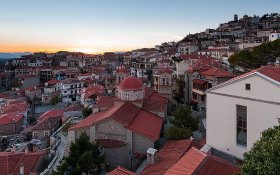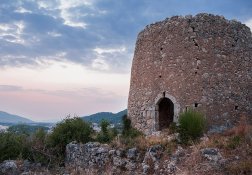hoakin1981
Member
Got my a MF 645 and a roll of Velvia 50 to try out. Coming from digital I have some experience but I am not sure if what I know can be applied on slide film as well.
So, example No.1
Typical sunset shot but with a clean horizon. In this I would meter (Spot) for the brightest part of the sunset and one more for the darker part below (house on right), calculate the difference and use an ND grad filter to compensate. Perhaps in trying using the zone system a tad as well I would calculate +1.5 exp.comp. on the bright spot.
Example No.2
Again, sunset but this time the horizon is not clean so using an ND grad is not possible. This is trickier, again 2 measurements in sunset/mill, calculate the diff. and either use an average or +1.5 in the bright spot and fire away. Of course in digital even if the mill was too dark I could easily fix it but this is not the case.
So, how would you go about shooting these 2 scenes? Please keep in mind that for this example you have velvia 50 on so not much room for errors. Also, since I have a Mamiya 645 Pro with the metered prism I/you have both spot and average metering available.
Really looking forward to any replies, many thanks in advance!
So, example No.1
Typical sunset shot but with a clean horizon. In this I would meter (Spot) for the brightest part of the sunset and one more for the darker part below (house on right), calculate the difference and use an ND grad filter to compensate. Perhaps in trying using the zone system a tad as well I would calculate +1.5 exp.comp. on the bright spot.
Example No.2
Again, sunset but this time the horizon is not clean so using an ND grad is not possible. This is trickier, again 2 measurements in sunset/mill, calculate the diff. and either use an average or +1.5 in the bright spot and fire away. Of course in digital even if the mill was too dark I could easily fix it but this is not the case.
So, how would you go about shooting these 2 scenes? Please keep in mind that for this example you have velvia 50 on so not much room for errors. Also, since I have a Mamiya 645 Pro with the metered prism I/you have both spot and average metering available.
Really looking forward to any replies, many thanks in advance!




